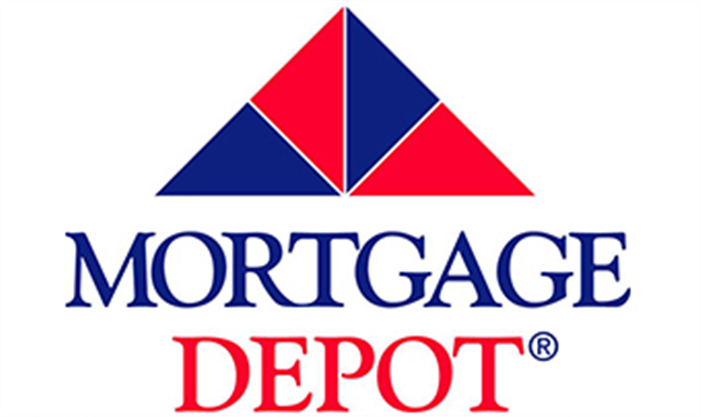AGENT LICENSE ID
131247

Brenda Joynson
Mortgage Consultant
Office:
Phone:
Email:
Address:
4462 West Saanich Rd, Victoria, British Columbia, V8Z 3E9
The Ins and Outs of Refinancing Your Mortgage
7/6/2023
Mortgage refinancing is a financial strategy that allows homeowners in Canada to adjust their existing mortgage terms to better suit their needs.
Understanding the ins and outs of mortgage refinancing is essential for homeowners looking to improve their financial situation or take advantage of new opportunities. Let’s explore the process, benefits, considerations, and eligibility criteria associated with mortgage refinancing in Canada.
I.What is Mortgage Refinancing?
Mortgage refinancing refers to the process of replacing your current mortgage with a new one, often with different terms and conditions. This can be done with your existing lender or by switching to a new lender. Homeowners choose to refinance their mortgage for various reasons, including lowering monthly payments, accessing home equity, securing a better interest rate, or changing the mortgage type (from variable to fixed-rate or vice versa).
II. Benefits of Mortgage Refinancing:
Lowering monthly mortgage payments: Refinancing can help reduce your monthly mortgage payments by obtaining a lower interest rate or extending the loan term. Accessing home equity: Refinancing allows homeowners to tap into their home equity for purposes such as home improvements, debt consolidation, or funding other investments. Securing a lower interest rate: If interest rates have dropped since you initially obtained your mortgage, refinancing can help you lock in a more favorable rate. Switching mortgage types: Refinancing provides an opportunity to change from a variable-rate mortgage to a fixed-rate mortgage or vice versa, based on your financial goals and market conditions.
III. The Process of Mortgage Refinancing:
The mortgage refinancing process involves several steps:
Assessing financial goals and needs: Determine your objectives and evaluate how refinancing aligns with your long-term financial plans. Evaluating current mortgage terms and conditions: Review your existing mortgage details, including interest rate, loan term, and penalties for early repayment.
Researching and comparing mortgage lenders and offers: Shop around for different lenders and compare their terms, rates, and fees to find the best refinancing option for your situation.
Gathering required documentation: Prepare the necessary documents, such as income verification, credit history, and property appraisal.
Submitting the mortgage refinance application: Complete the application process, providing all the required information and documentation.
Appraisal and property evaluation: A new appraisal may be required to assess the current value of your property.
Approval and closing the new mortgage: Once approved, review the terms and conditions of the new mortgage and close the refinancing transaction.
Paying off the existing mortgage: The proceeds from the new mortgage are used to pay off the remaining balance of the original mortgage.
IV. Considerations and Potential Costs:
Before proceeding with mortgage refinancing, it's important to consider the following factors:
Applicable penalties and fees: Be aware of any penalties or fees associated with early mortgage repayment and refinancing.
Long-term financial implications: Evaluate the long-term financial impact of refinancing, including the total cost of the new mortgage and its alignment with your financial goals.
Common costs associated with mortgage refinancing include appraisal fees, legal fees, and discharge fees for your current mortgage.
V. Eligibility and Qualifications:
To qualify for mortgage refinancing in Canada, lenders consider factors such as credit history, income stability, property value, and loan-to-value ratio. It's important to meet the lender's eligibility criteria and provide the necessary documentation to support your application. If you face challenges in meeting traditional criteria, alternative options may be available through alternative lenders or specialized mortgage programs.
VI. Working with a Mortgage Professional:
Seeking guidance from a mortgage broker can greatly assist you throughout the mortgage refinancing process. They will provide expert advice, help you navigate the various options available, and negotiate on your behalf to secure the best possible terms and rates.
Mortgage refinancing can be a powerful financial tool for homeowners in Canada. By understanding the process, benefits, considerations, and eligibility criteria, you can make informed decisions and take advantage of the opportunities refinancing offers. However, it's crucial to carefully evaluate your financial goals, assess the costs involved, and work with professionals who can guide you through the process.
With the right strategy and proper planning, mortgage refinancing can help you achieve your financial objectives and improve your overall financial well-being.
I.What is Mortgage Refinancing?
Mortgage refinancing refers to the process of replacing your current mortgage with a new one, often with different terms and conditions. This can be done with your existing lender or by switching to a new lender. Homeowners choose to refinance their mortgage for various reasons, including lowering monthly payments, accessing home equity, securing a better interest rate, or changing the mortgage type (from variable to fixed-rate or vice versa).
II. Benefits of Mortgage Refinancing:
Lowering monthly mortgage payments: Refinancing can help reduce your monthly mortgage payments by obtaining a lower interest rate or extending the loan term. Accessing home equity: Refinancing allows homeowners to tap into their home equity for purposes such as home improvements, debt consolidation, or funding other investments. Securing a lower interest rate: If interest rates have dropped since you initially obtained your mortgage, refinancing can help you lock in a more favorable rate. Switching mortgage types: Refinancing provides an opportunity to change from a variable-rate mortgage to a fixed-rate mortgage or vice versa, based on your financial goals and market conditions.
III. The Process of Mortgage Refinancing:
The mortgage refinancing process involves several steps:
Assessing financial goals and needs: Determine your objectives and evaluate how refinancing aligns with your long-term financial plans. Evaluating current mortgage terms and conditions: Review your existing mortgage details, including interest rate, loan term, and penalties for early repayment.
Researching and comparing mortgage lenders and offers: Shop around for different lenders and compare their terms, rates, and fees to find the best refinancing option for your situation.
Gathering required documentation: Prepare the necessary documents, such as income verification, credit history, and property appraisal.
Submitting the mortgage refinance application: Complete the application process, providing all the required information and documentation.
Appraisal and property evaluation: A new appraisal may be required to assess the current value of your property.
Approval and closing the new mortgage: Once approved, review the terms and conditions of the new mortgage and close the refinancing transaction.
Paying off the existing mortgage: The proceeds from the new mortgage are used to pay off the remaining balance of the original mortgage.
IV. Considerations and Potential Costs:
Before proceeding with mortgage refinancing, it's important to consider the following factors:
Applicable penalties and fees: Be aware of any penalties or fees associated with early mortgage repayment and refinancing.
Long-term financial implications: Evaluate the long-term financial impact of refinancing, including the total cost of the new mortgage and its alignment with your financial goals.
Common costs associated with mortgage refinancing include appraisal fees, legal fees, and discharge fees for your current mortgage.
V. Eligibility and Qualifications:
To qualify for mortgage refinancing in Canada, lenders consider factors such as credit history, income stability, property value, and loan-to-value ratio. It's important to meet the lender's eligibility criteria and provide the necessary documentation to support your application. If you face challenges in meeting traditional criteria, alternative options may be available through alternative lenders or specialized mortgage programs.
VI. Working with a Mortgage Professional:
Seeking guidance from a mortgage broker can greatly assist you throughout the mortgage refinancing process. They will provide expert advice, help you navigate the various options available, and negotiate on your behalf to secure the best possible terms and rates.
Mortgage refinancing can be a powerful financial tool for homeowners in Canada. By understanding the process, benefits, considerations, and eligibility criteria, you can make informed decisions and take advantage of the opportunities refinancing offers. However, it's crucial to carefully evaluate your financial goals, assess the costs involved, and work with professionals who can guide you through the process.
With the right strategy and proper planning, mortgage refinancing can help you achieve your financial objectives and improve your overall financial well-being.




























